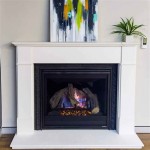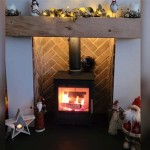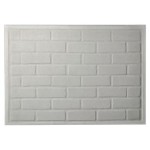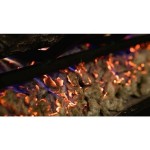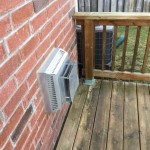```html
Make A Fireplace Mantel: A Comprehensive Guide
A fireplace mantel serves as a focal point in a room, offering both aesthetic appeal and functional utility. It provides a surface for displaying decorative items, such as photographs, artwork, and seasonal decorations. Constructing a fireplace mantel can be a rewarding project for homeowners with basic woodworking skills. This article presents a comprehensive guide to designing and building a fireplace mantel, covering essential planning, material selection, construction techniques, and finishing touches.
Planning and Design Considerations
Before commencing the construction of a fireplace mantel, careful planning is essential. This stage involves determining the desired style, dimensions, and placement of the mantel. Consider the architectural style of the room and the existing fireplace surround. A mantel should complement the overall design aesthetic, whether it is modern, traditional, rustic, or contemporary.
Accurate measurements are paramount. The mantel's height above the firebox opening is crucial for safety and compliance with building codes. Local building codes typically specify minimum clearances between the top of the firebox and the bottom of the mantel. These clearances are designed to prevent the mantel from catching fire. It is imperative to consult local building codes before proceeding with any construction.
The width of the mantel should be proportional to the width of the fireplace surround. A mantel that is too narrow or too wide can appear disproportionate and detract from the overall visual harmony of the room. Consider the depth of the mantel, which determines the amount of display space available. A deeper mantel provides more space for decorative items but may protrude further into the room.
Sketching out the design and creating a detailed plan with dimensions is highly recommended. This allows for visualization of the finished product and helps to identify potential problems before construction begins. The plan should include detailed drawings of all components, including the mantel shelf, legs, and any decorative elements.
Material Selection and Preparation
The choice of materials for a fireplace mantel profoundly affects its appearance, durability, and cost. Wood is a popular choice for mantels, offering a wide range of options in terms of species, grain patterns, and finishes. Common wood species used for mantels include pine, oak, maple, cherry, and walnut. Each species possesses unique characteristics that contribute to the mantel's overall look and feel.
Pine is a relatively inexpensive and readily available wood that is easy to work with. However, it is softer than other hardwoods and may be more susceptible to dents and scratches. Oak is a strong and durable hardwood with a distinctive grain pattern. It is a popular choice for traditional-style mantels. Maple is a hard and dense wood with a smooth, even grain. It is well-suited for modern and contemporary designs. Cherry is a beautiful hardwood with a rich, reddish-brown color. It is often used for high-end mantels. Walnut is a luxurious hardwood with a dark, chocolate-brown color. It is prized for its beauty and durability.
In addition to wood, other materials can be used for fireplace mantels, such as stone, brick, and metal. Stone and brick mantels provide a rustic and durable look. Metal mantels offer a sleek and modern aesthetic. The selection of materials should align with the overall design aesthetic of the room and the desired level of durability.
Once the materials have been selected, it is crucial to prepare them properly before construction begins. Wood should be properly dried and acclimated to the environment in which the mantel will be installed. This helps to prevent warping and cracking. All materials should be carefully inspected for defects and imperfections. Any damaged or defective materials should be replaced before proceeding.
Cutting the materials to the required dimensions is a critical step. Precise measurements and accurate cuts are essential for ensuring that the mantel fits properly and looks aesthetically pleasing. A miter saw or circular saw can be used to make accurate cuts. Safety precautions should always be observed when using power tools, including wearing safety glasses and hearing protection.
Construction Techniques and Installation
The construction of a fireplace mantel typically involves assembling the various components, such as the mantel shelf, legs, and decorative elements. Several construction techniques can be employed, depending on the design and materials used. One common technique is to use woodworking joints, such as mortise and tenon joints, dovetail joints, or biscuit joints, to connect the components. These joints provide strong and durable connections.
Alternatively, screws and glue can be used to assemble the components. When using screws, it is important to pre-drill pilot holes to prevent the wood from splitting. High-quality wood glue should be used to create a strong and durable bond. Clamps can be used to hold the components together while the glue dries.
Decorative elements, such as moldings, carvings, or corbels, can be added to the mantel to enhance its aesthetic appeal. These elements can be attached using glue, nails, or screws. It is important to carefully align and position the decorative elements to ensure that they are aesthetically pleasing.
Once the mantel has been assembled, it is ready for installation. The installation process typically involves attaching the mantel to the wall above the fireplace surround. The mantel can be attached using screws, nails, or construction adhesive. It is important to ensure that the mantel is securely attached to the wall and that it is level and plumb. A level and plumb bob can be used to verify the accuracy of the installation.
Before attaching the mantel, it is critical to locate and avoid any electrical wiring or plumbing pipes that may be concealed within the wall. Damaging these utilities can result in serious injury or property damage. A stud finder can be used to locate the wall studs, which provide a solid anchor for the screws or nails.
After the mantel has been installed, any gaps or seams can be filled with wood filler or caulk. The filler or caulk should be applied smoothly and evenly to create a seamless appearance. Once the filler or caulk has dried, it can be sanded smooth to blend in with the surrounding surface.
Finishing Touches and Sealing
The final step in constructing a fireplace mantel involves applying a finish to protect the wood and enhance its appearance. A variety of finishes can be used, including paint, stain, varnish, and lacquer. The choice of finish depends on the desired look and the type of wood used.
Paint provides a durable and opaque finish that can be used to create a variety of colors and textures. Stain allows the natural grain of the wood to show through while adding color and depth. Varnish provides a clear and protective finish that enhances the wood's natural beauty. Lacquer is a durable and glossy finish that is often used for high-end furniture.
Before applying the finish, the wood should be sanded smooth to remove any imperfections. Sanding also helps to create a smooth and even surface for the finish to adhere to. Multiple coats of finish may be required to achieve the desired look and level of protection. Each coat should be allowed to dry completely before applying the next coat.
After the finish has been applied, it is important to seal the wood to protect it from moisture and other environmental factors. A sealant can be applied over the finish to provide an extra layer of protection. Common sealants include polyurethane, wax, and oil. The sealant should be applied according to the manufacturer's instructions. Regular cleaning and maintenance will help to keep the fireplace mantel looking its best for years to come.
```
How To Make An Easy Diy Fireplace Mantel Sprucing Up Mamahood

Diy Fireplace Mantel Designatedspacedesign Com

Diy Rustic Fireplace Mantel The Cure For A Boring

How To Build A Fireplace Mantel Easy Diy Blossoming Life

How To Make A Diy Fireplace Mantel The Idea Room

Easy Fireplace Mantel Diy

Diy Fireplace Mantel And Surround Jenna Kate At Home

Easy Diy Fireplace Mantel Tutorial Jessica Welling Interiors
:max_bytes(150000):strip_icc()/sandandsisal-bdc76ad938a44d28ae9e23ef6c9fa331.jpg?strip=all)
17 Diy Fireplace Mantel Plans

Build A Fireplace Mantel
Related Posts


